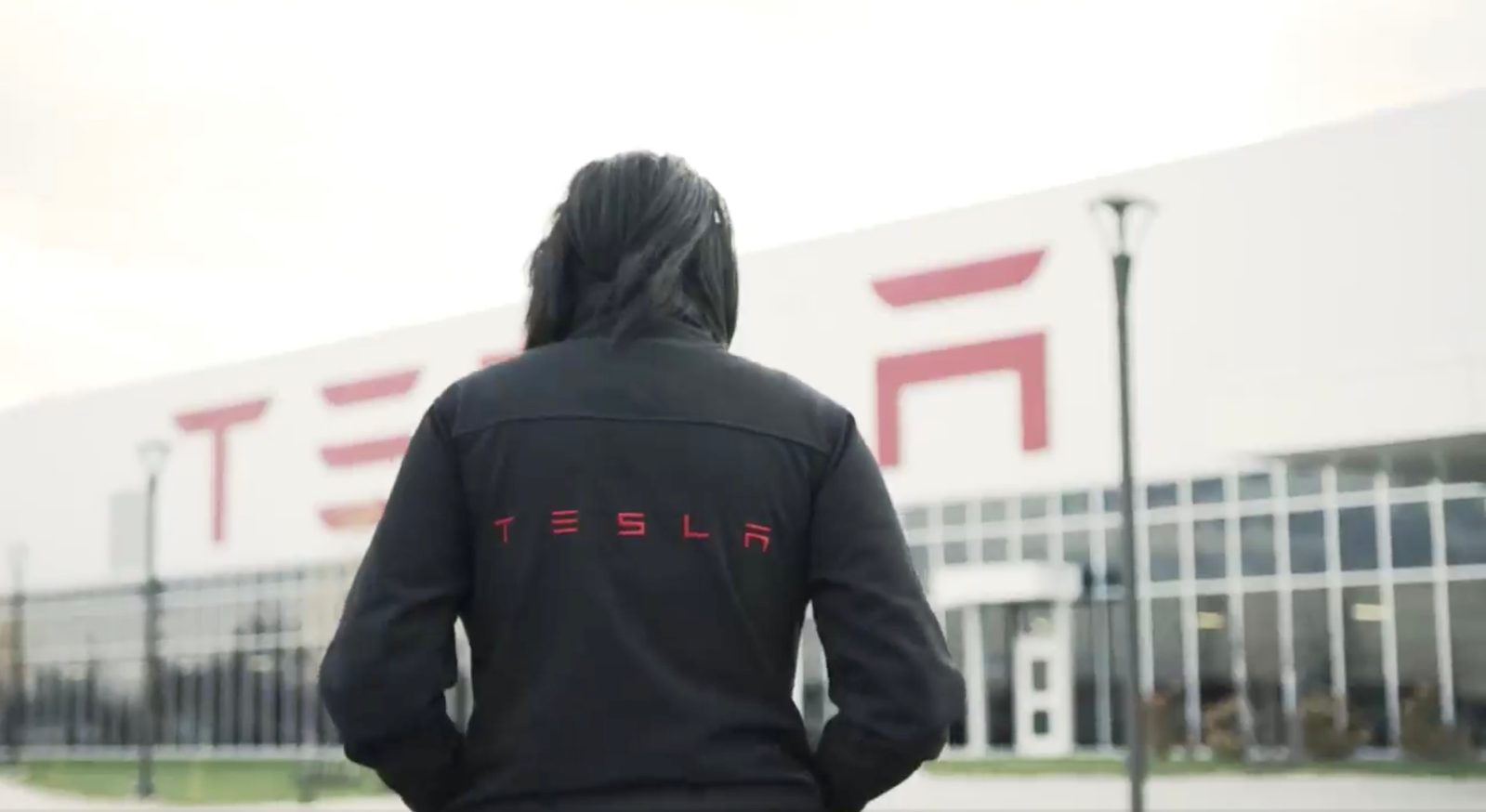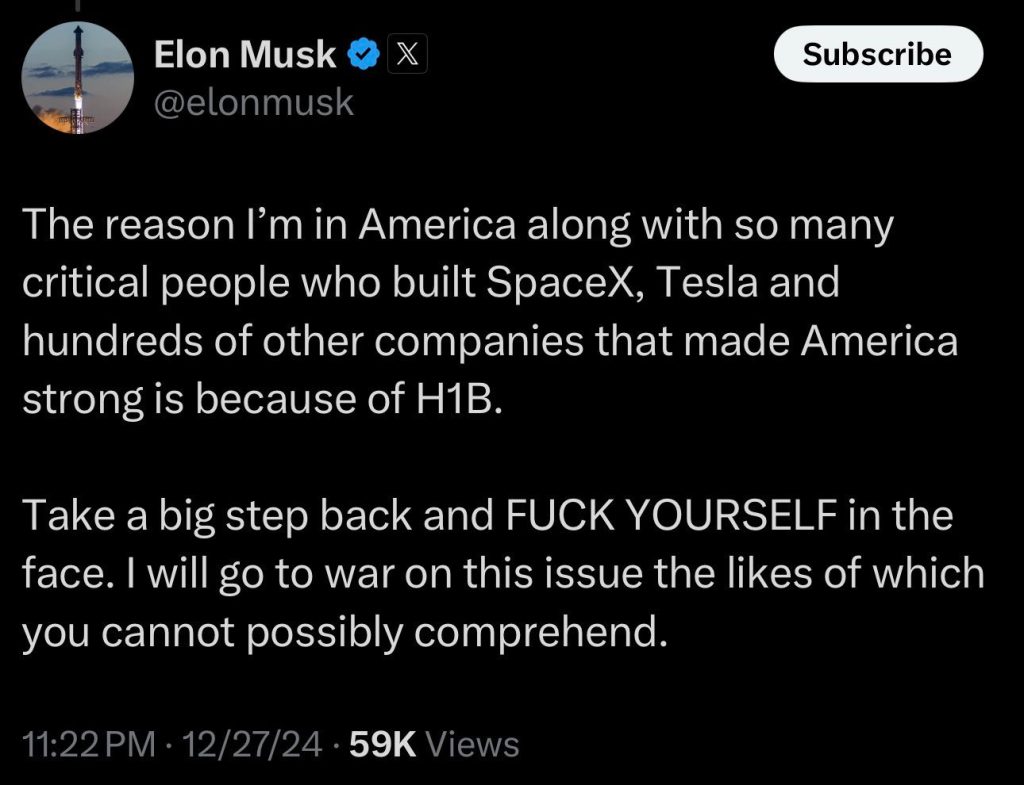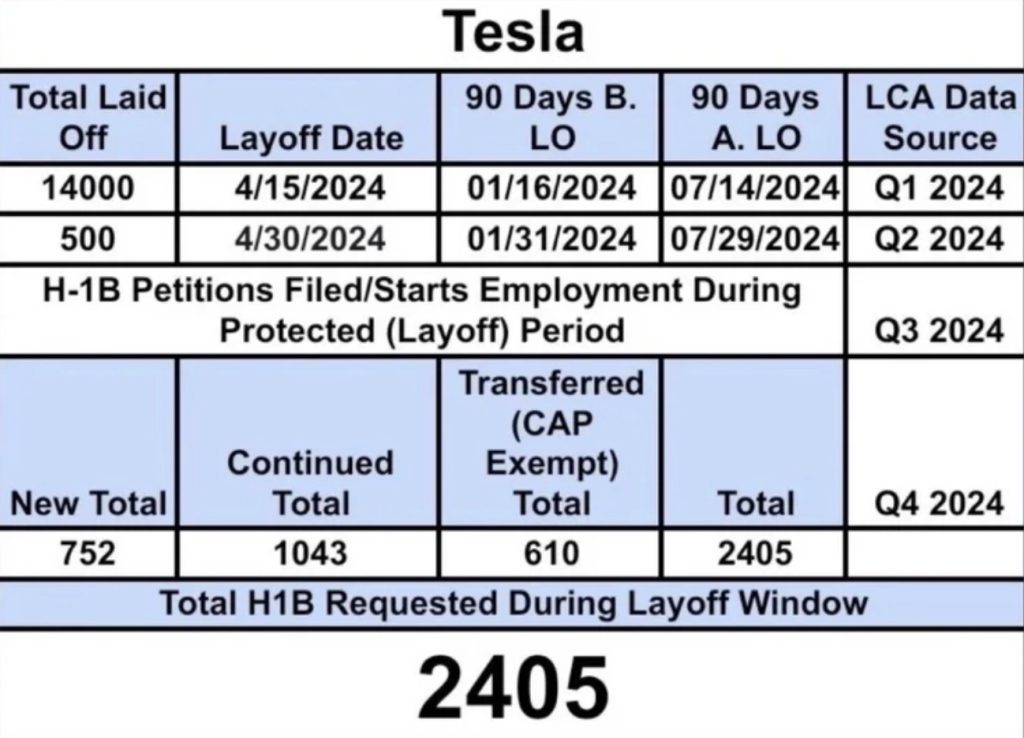
Tesla has replaced some of its US employees who were let go as part of a big wave of layoffs earlier this year with foreign workers using H-1B visas, which CEO Elon Musk is now campaigning to increase.
Over the last week, Elon Musk has been promoting the increase of H-1B visas, which are used to bring foreign workers into the US for “specialty occupations.”
Qualified foreign workers need to be sponsored by a company to get the visa, which lasts three years, extendable to six years, after which the holder needs to reapply.
The visa holder must maintain employment at the visa sponsor to retain the work visa. The worker would have to leave the country if the employment ends for whatever reason. This has led to some criticism as it gives tremendous power to the employer and can lead to a modern version of indentured servitude.
While there are obvious benefits to bringing skilled workers into the US, people are divided on the issue because those workers are often paid less than US workers, putting negative pressure on compensation, especially in the tech industry, on top of the moral questions about holding visas over the heads of foreign workers.
That’s why the US Congress has mandated a 65,000 visa cap limiting the number of H-1B visas that can be issued each fiscal year, plus an extra 20,000 for foreign people coming out of graduate programs at US universities.
Tesla has been a big user of those visas, and its CEO, Elon Musk, has been using his newfound political influence to promote increasing the cap of H-1B visas. He received significant pushback from his new friends on the right side of the political spectrum in the US, who see this visa as being used to steal jobs from Americans.
He is quite passionate about the issue, to say the least:

To be fair, Musk didn’t come to the US on a H-1B visa. He came on a student visa, and later, his own brother admitted that they were illegal immigrants in the early days of launching their Zip2 startup in the US.
Tesla’s use of H-1B visas
Over the last few days, several current and former Tesla workers reached out to Electrek to reveal that Tesla ramped up its use of H-1B visas to replace US workers it let go during a wave of layoffs earlier this year.
We reported that roughly US 15,000 employees were let go at Tesla around April 2024. Every department was affected, but the layoffs were concentrated in Texas and California, where Tesla has more workers than anywhere else.
Current and former Tesla employees said that many of the laid-off US workers were replaced by foreign workers using H-1B visas.
These claims are backed by US Department of Labor data, which show that Tesla requested over 2,000 H-1B visas during the time it was laying off US workers (via Reddit):

Again, there’s a cap of 65,000 visas for the entire US annually, and Tesla alone tried to get over 3% of them.
Tesla workers said that many employees let go were more senior engineers with higher compensation and they have been replaced with junior engineers from foreign countries at a lower pay.
Electrek’s Take
To be clear, I’m not taking a stance on H-1B here. It seems like there should be good uses for this visa, but it certainly can be abused. My goal is to share more information that could explain why Elon would want more of this visa for his businesses, and maybe not for the right reasons.
At the core, people see the problem of hiring workers from other countries who are willing to work for lower pay than US workers – taking jobs from Americans and putting pressure on overall compensation in the US.
There’s certainly value to the argument. Elon’s counterargument is that the US doesn’t have enough skilled workers, and he needs to hire people from other countries to compensate.
This argument also has some value, especially for specific sectors, like manufacturing engineering, which has become less popular in the US.
However, at Tesla and with Elon, the problem is much deeper than this.
The problem stems from the employer’s weight over the workers as a sponsor of their visas. Elon is famously hard on workers, and he doesn’t like the traditional 40-hour workweek. He often pushes Tesla employees to work 60 to 80 hours per week.
Many Tesla employees have happily done this for years, and the main motivator has been the belief in Tesla’s mission to accelerate the advent of electric transport in order to curb climate change.
Some people still believe in this mission, but Elon has eroded it over the last few years by shifting focus on self-driving and advocating for removing EV incentives in the US. It is becoming harder to make people believe that Tesla’s main goal is to accelerate the advent of EVs when its CEO is talking more about Tesla becoming “the most valuable company in the world” than its impact on climate change. And let’s not forget that he has spent a tremendous amount of effort and money over the last year to get deniers of the human impact on climate change elected.
But he has found another effective way to motivate workers to work harder and for longer hours: hold a visa over their head.
Top comment by dirtside
H1B are primarily a vehicle for US corporations to get access to cheaper foreign labor with reduced labor protections. H1B workers always live under the threat of being deported if they lose their job, which forces them to be more compliant to their corporate masters while they're here. If we really cared about improving US workers' tech skills, we'd just spend money training and educating US citizens.
The nature of the H-1B visa being attached to your employer puts tremendous pressure on the workers.
On top of it, Tesla, like many other companies using H-1B visas, tends to hire from countries where longer workweek are already the norm. For example, India is already mostly on a 6-day workweek.
I don’t like to Tesla workers killing themselves working 80 hours per week, but if they do it passionately, by choice, for what they believe to be a great mission, it’s hard to argue against that. It’s their choice.
But if they do it because they want the “American dream” and they are afraid that getting let go will kill or slow down their chance of immigrating because they are in the country on a H-1B visa, that feels like exploitation to me.
FTC: We use income earning auto affiliate links. More.






Comments